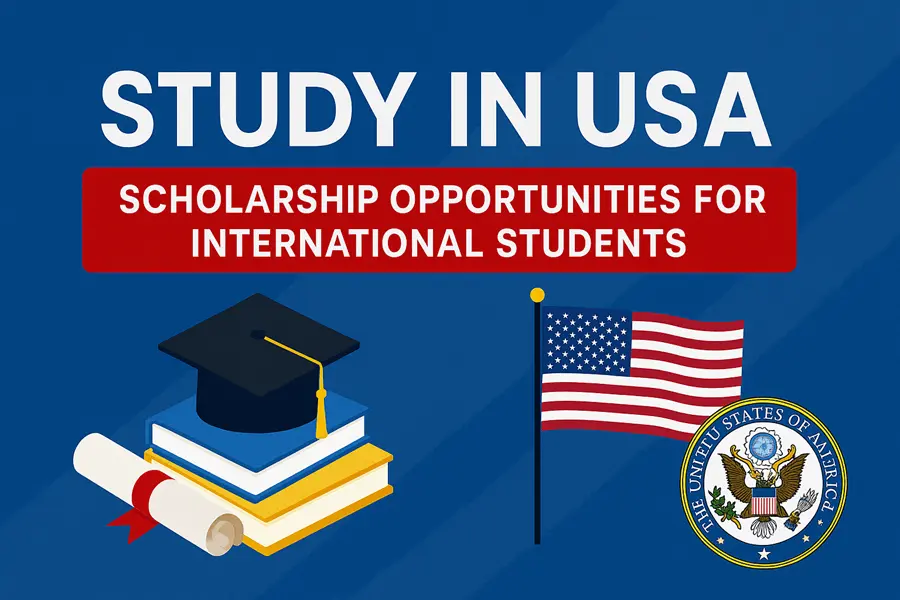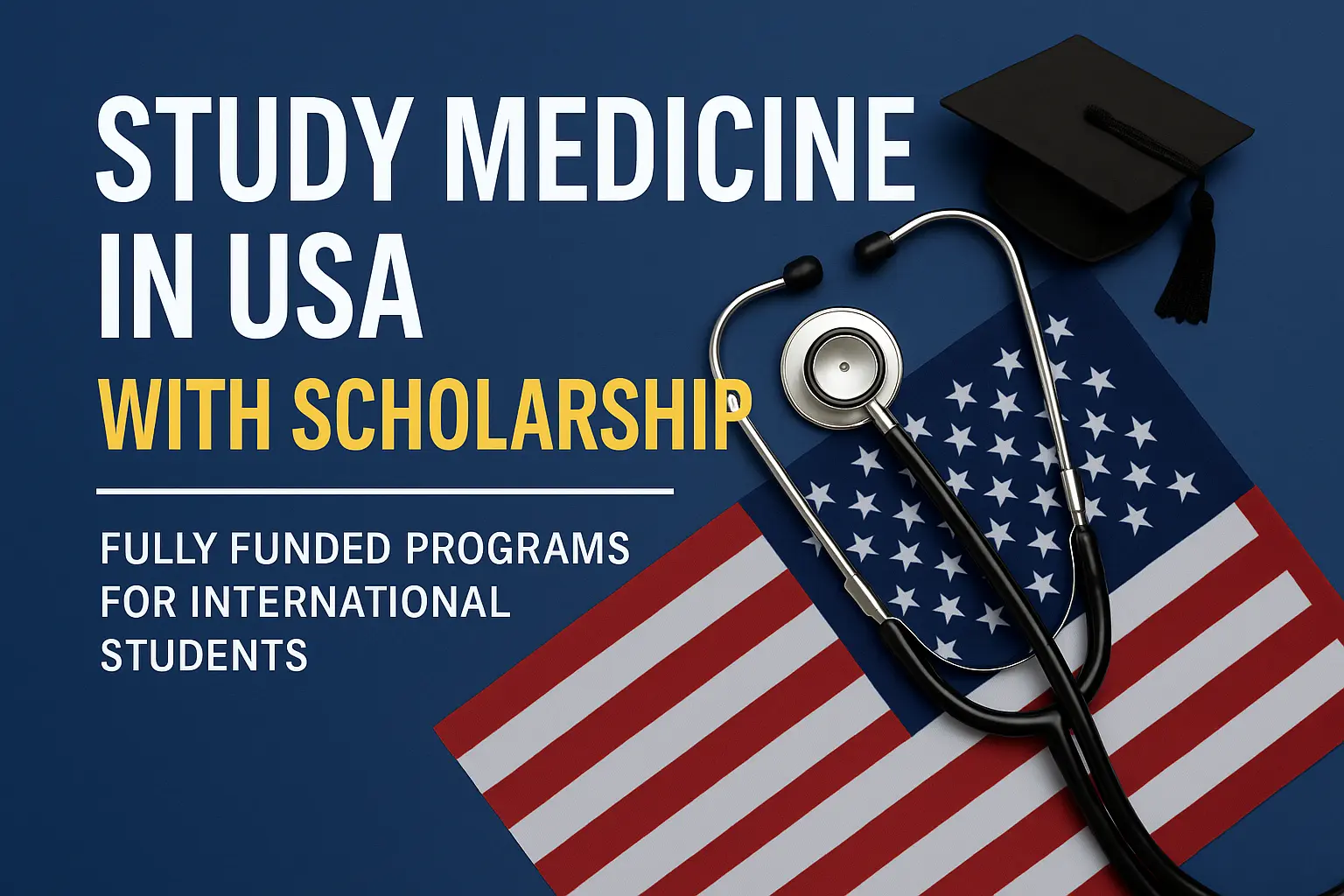Studying at Harvard University is a dream for students worldwide. With tuition exceeding $75,000 per year, many assume it’s out of reach. The reality? Harvard offers some of the most generous financial aid packages in the world, including fully funded scholarships, grants, and visa sponsorship opportunities for international students.
Whether you’re applying for an undergraduate, master’s, MBA, LLM, or PhD program, Harvard provides pathways to study in the USA without financial barriers.
Understanding Harvard University’s Financial Aid and Scholarship System
Harvard’s financial aid philosophy is rooted in need-blind admission, meaning a student’s ability to pay is not considered during the admissions process. Instead, the university assesses financial need after acceptance and constructs aid packages that cover 100% of demonstrated need. This approach ensures that financial constraints do not hinder access to a Harvard education.
Key Principles of Harvard’s Financial Aid Program
- Need-Based Aid Dominates – Unlike many universities that offer merit-based scholarships, Harvard primarily awards aid based on financial need. This means there are no academic or athletic scholarships; instead, grants, work-study programs, and low-interest loans form the core of aid packages.
- No Loans Policy – In a groundbreaking move, Harvard replaced student loans with grant-based aid in 2007, ensuring that undergraduates graduate without debt. Graduate aid varies by program but often includes fellowships and research stipends.
- Generous Family Contribution Thresholds – Families earning less than $85,000 per year typically pay nothing toward tuition. Those earning between $85,000 and $150,000 contribute between 0-10% of their income, making Harvard more affordable than many public universities.
- International Students Receive Equal Treatment – Harvard is one of the few U.S. universities that extends need-blind admissions and full financial aid to international students.
How Harvard Calculates Financial Need
The Harvard Financial Aid Office uses a customized methodology to assess each family’s financial situation, considering:
- Parental income and assets
- Student earnings (from summer jobs or internships)
- Family size and number of children in college
- Exceptional medical or financial hardships
The expected family contribution (EFC) is determined, and Harvard covers the remaining cost through grants, scholarships, and work-study opportunities.
Harvard University Scholarships for Undergraduate Students
Harvard College offers one of the most comprehensive undergraduate financial aid programs in the world. Below, we break down the key components of aid available to undergraduates.
1. Harvard Grant (Need-Based Scholarships)
The cornerstone of undergraduate aid, Harvard Grants, are direct scholarships that do not require repayment. The average grant for the 2023-2024 academic year was $63,000, covering tuition, room, board, and fees for students with significant financial need.
2. Outside Scholarships and Their Impact
Harvard encourages students to seek external scholarships (e.g., National Merit, Coca-Cola Scholars, Gates Millennium). If a student secures outside funding, Harvard adjusts its aid package by reducing the student’s work-study expectation first, ensuring outside awards directly benefit the student.
3. Work-Study Opportunities
Harvard’s student employment program allows undergraduates to work up to 20 hours per week in on-campus jobs, research positions, or community service roles. Earnings typically contribute $2,000-$3,000 per year toward personal expenses.
4. Special Programs for Low-Income Students
- The Harvard Financial Aid Initiative (HFAI) – Targets students from families earning less than $85,000, offering full tuition coverage.
- Summer Savings Waiver – Eliminates the expected summer work contribution for students from the lowest-income backgrounds.
How to Apply for Undergraduate Financial Aid
- Submit the FAFSA and CSS Profile – Required for all U.S. citizens and permanent residents.
- International Students Submit the ISFAA – The International Student Financial Aid Application serves as an alternative to the FAFSA.
- Provide Tax Documentation – Families must submit IRS tax returns or international equivalents.
- Early Application Advantage – Applying for aid alongside admissions ensures timely consideration.
Harvard University Scholarships for Graduate Students
Graduate financial aid at Harvard varies significantly by school, with the most generous funding available in PhD programs, while professional degrees (e.g., MBA, Law, Medicine) often rely on loans and limited scholarships.
1. Fully Funded PhD Programs
Harvard’s Graduate School of Arts and Sciences (GSAS) guarantees full funding for all PhD students, covering:
- Full tuition and health fees
- Stipends ($45,000+ per year)
- Research and travel grants
Funding sources include:
- Harvard Fellowships (university-funded)
- External Grants (NSF, NIH, Fulbright)
- Teaching and Research Assistantships
2. MBA Scholarships at Harvard Business School (HBS)
HBS awards need-based fellowships, with over 50% of students receiving aid. The average grant is $42,000 per year, and the school also offers merit-based awards like the Forward Fellowship for underrepresented groups.
3. Harvard Law School (HLS) Financial Aid
HLS provides need-based grants and the Public Service Initiative, which forgives loans for graduates entering public interest law.
4. Medical School Aid at Harvard Medical School (HMS)
HMS uses a need-based model, with 70% of students receiving aid. The Financial Aid Office works closely with students to minimize debt, offering scholarships like the Dean’s Scholarship and Merit-based awards.
How to Apply for Graduate Financial Aid
- Check Program-Specific Requirements – Each Harvard graduate school has unique deadlines and forms.
- Submit the FAFSA (for U.S. students) – Required for federal loans and some grants.
- Apply for External Fellowships – Many students secure funding through Fulbright, Rhodes, or NSF grants.
- Negotiate Aid Offers – Some programs allow admitted students to appeal for additional funding.
Conclusion: Is a Harvard Scholarship Within Your Reach?
Harvard’s financial aid programs are designed to remove economic barriers to world-class education. Whether you’re an undergraduate from a low-income family or a graduate student pursuing a PhD, Harvard offers substantial funding opportunities to make your academic dreams achievable.
Key Takeaways:
- Harvard meets 100% of demonstrated financial need for all admitted students.
- Undergraduates from families earning under $85,000 pay $0 in tuition.
- PhD students receive full funding, while professional degrees offer need-based aid.
- International students receive the same need-based support as U.S. applicants.
If Harvard is your dream school, start preparing early—research scholarships, submit financial aid forms on time, and explore external funding options. With careful planning, a Harvard education may be more affordable than you think.
Are you ready to take the next step toward securing a Harvard scholarship? Begin your application today and unlock the door to one of the world’s most prestigious universities.





